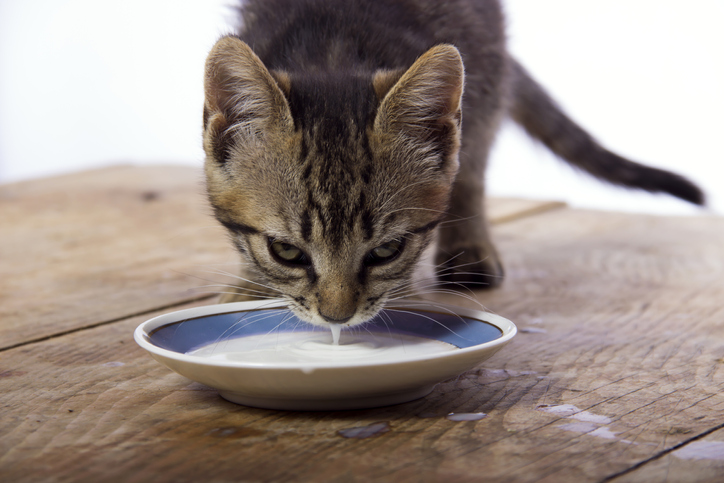96 percent of the internet consists of cute cat pictures and funny cat videos. Okay, that’s not true, and neither are these long-held myths about cats.
Myth: Cats love milk.
Truth: It’s one of things we most associate with cats — they love to lap up a saucer of milk in much the same way that dogs will go to town on a pile of meat (or anything, really — dogs aren’t as picky as cats). But while humans enjoy the milk of a cow, and our intricate and complicated digestive systems can handle it (unless you’re lactose intolerant), a cat’s gut is more delicate and really can’t take the milk of a different species. In other words, cow’s milk causes cat diarrhea.
Myth: Cats can see in the dark.
Truth: They can’t see in complete darkness, because the nature of sight involves the eye and brain processing light. However, cats have evolved to be able to see fairly well in near darkness. Their eyes can absorb more light than human eyes do, because cat corneas are thinner than those of humans, and their irises are larger. Cat eyes come also stocked with more light-magnifying rods in the retinas.
Myth: “Indoor cats” don’t catch cat diseases.
Truth: That seems to be fairly logical — how could a cat contract cat-susceptible illnesses if they spend their whole lives inside, far from other cats and nature? Well, this would only work if the humans they live with also never went outside of the home. Cats can become ill from airborne germs that float through the air or hitch a ride on their human companion’s clothes. (Also, both indoor and outdoor cats will eat bugs if left to their own devices, and those can carry germs, too.)
Myth: Cats always land on their feet.
Truth: This one speaks to cats’ remarkable agility and body knowledge. Falls are dangerous and painful for any creature, cats included. It’s just that so many people have witnesses a cat fall off of or out of something, and twist their body into a “brace for impact” stance that the myth spread. However, while cats can hurt themselves from a tall fall, but they are actually more likely to be injured from a fall from a lower height, because they don’t have the time to get into “landing position.”








